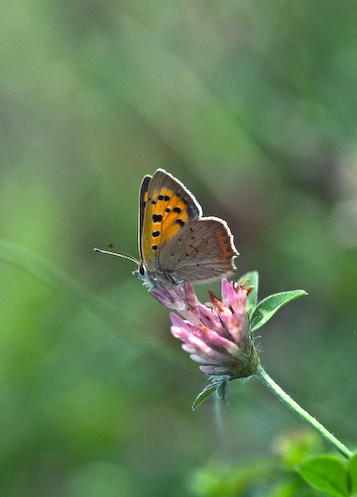Butterflies
Skippers
Whites
Hairstreaks
Blues and Coppers
Admirals
Vannesids
Fritallaries
Browns
| Year | First | Second |
| 1976 | May(wk19) | July(wk28) |
| 1977 | May 14 | Aug(wk32) |
| 1978 | Aug(wk34) | |
| 1979 | Aug(wk32) | |
| 1980 | May 15 | |
| 1981 | june 1 | Aug(wk31) |
| 1982 | May 12 | July(wk29) |
| 1983 | May 25 | Aug(wk32) |
| 1984 | May 30 | Aug(wk32) |
| 1985 | June(wk24) | Aug(wk33) |
| 1986 | May 14 | Aug(wk31) |
| 1987 | ||
| 1988 | ||
| 1989 | May 14 | |
| 1990 | ||
| 1991 | ||
| 1992 | ||
| 1993 | ||
| 1994 | ||
| 1995 | ||
| 1996 | ||
| 1997 | ||
| 1998 | ||
| 1999 | ||
| 2000 | ||
| 2001 | ||
| 2002 | ||
| 2003 | ||
| 2004 | ||
| 2005 | ||
| 2006 | ||
| 2007 | ||
| 2008 | ||
| 2009 | ||
| 2010 | ||
| 2011 | ||
| 2012 | May 22 Fack | |
| 2013 | Aug 3 BC | |
| 2014 | ||
| 2015 | ||
| 2016 | ||
| 2017 | ||
| 2018 | ||
| 2019 | Jun17 Fack | Sept 2 HE |
| 2020 | May 2 Fack |
Submit Your Records & Comments Here
Butterfly Survey 1976-2020
Small Copper
Small Copper Lycaena phlaeas

wingspan: 28mm - with abberation to left forewing
This butterfly is iconic to me. It is easy to photograph and was the subject of my first completely sucessful butterfly picture. It perches frequently and is the butterfly equivalent of the robin, in its pugnacity - flying out to meet any intruder that might stray into its territory, (whatever the size). I have recorded this butterfly from early May onwards and it is present in almost every place I have recorded butterflies in the South East and beyond. As an indicator of habitat change, a butterfly was photographed on the South side of the main St Mary Cray rail viaduct in the late 1970's. The butterfly is completely catholic in habitat, but the location where I photographed the butterfly is now so polluted by the constant stream of motorway bound traffic, that I am sure NO butterflies breed there at all and this despite the introduction of catalytic convertors to our cars.
Habit: male and female fairly similar, (male more strikingly marked with dark spots and dashes). The butterfly has a rapid teritorial flight and frequently comes to rest on a favourite low perch. Wing patterns are subject to a degree of variation in the distribution and intensity of markings*.
Triple brooded in best years: over winters as a larvae. Pupa can be found loosely attached to dead leaves or stem.
Larval Foodplant: dock, sorrel, sheep's sorrel.
Status: not under threat in our area, but diminishing, due to pressure from the general degradation and tidying of our roadsdie verges - numbers fluctuating year by year.
WH - White Hill Shoreham, BC - Bromley Common, Ha Hayes --BN Bromley North - Ey Eynsford - Orp Orpington - HE High Elms Lull Lulingstone
© Rodney Compton
